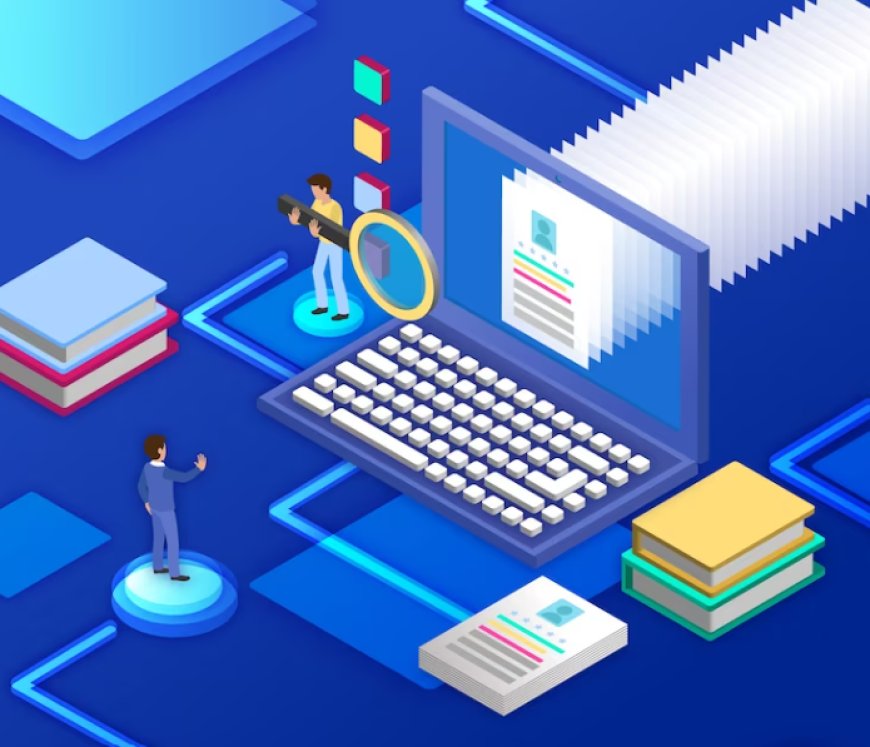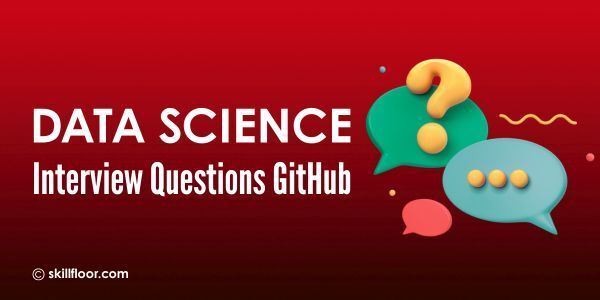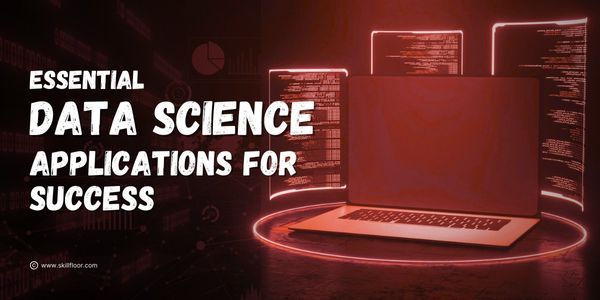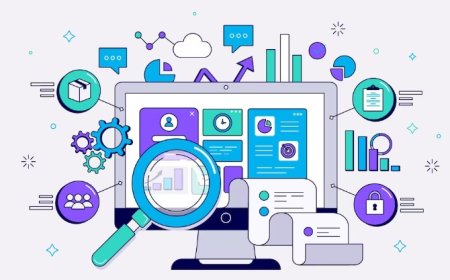A Comprehensive Guide to Data Science Libraries in Python
Explore essential data science libraries in Python with our comprehensive guide. Learn how to leverage powerful tools and packages for data analysis, visualization, machine learning, and more.

Data science has emerged as a transformative field, and Python stands at its forefront as a versatile and powerful tool. This comprehensive guide delves into the world of data science libraries in Python, offering a roadmap for both beginners and experienced practitioners. We'll explore essential libraries like NumPy, Pandas, Matplotlib, Seaborn, ScikitLearn, Statsmodels, TensorFlow, and PyTorch. Through this journey, you'll learn how to manipulate data, create compelling visualizations, build machine learning models, and conduct statistical analysis. By the end, you'll be equipped to tackle realworld data challenges and harness the full potential of Python in your data science endeavors.
Importance of Python in data science
-
Versatility: Python's wide range of libraries and packages make it suitable for various data science tasks, from data manipulation to machine learning.
-
Large Community: Python has a vast and active user community, providing ample support and resources.
-
Rich Ecosystem: Python offers tools like NumPy, Pandas, Matplotlib, and ScikitLearn, enhancing data analysis and modeling capabilities.
-
Data Visualization: Libraries like Matplotlib, Seaborn, and Plotly enable effective data visualization.
-
Machine Learning: Python's ScikitLearn, TensorFlow, and PyTorch are popular frameworks for building and deploying machine learning models.
-
Data Integration: Python easily integrates with databases, APIs, and other data sources, simplifying data retrieval and preprocessing.
-
Open Source: Python is opensource, reducing costs and fostering collaboration in data science projects.
-
Accessibility: Its simple syntax and readability make Python accessible to both beginners and experienced programmers in data science.
-
CrossPlatform Compatibility: Python runs on multiple platforms, ensuring code portability.
-
Extensibility: Python can be extended with libraries and modules written in other languages like C and C++, allowing performance optimization.
Getting Started with Python for Data Science
Python is a versatile and widely used programming language in the field of data science. It's known for its simplicity and readability, making it an excellent choice for beginners. In this section, we'll provide a brief overview of Python, highlighting its key features and why it's an essential tool for data science.
Before diving into data science projects, it's crucial to set up your Python environment properly. We'll guide you through the process of installing Python and the essential libraries, such as NumPy and Pandas, which are fundamental for data manipulation and analysis. Ensuring a smooth setup is the first step towards your data science journey.
Data analysis often involves working with large datasets, and Jupyter notebooks provide an interactive and user friendly environment for this purpose. We'll introduce you to Jupyter notebooks, explaining how to create, run, and document your data analysis code effectively. Jupyter notebooks will become your goto tool for exploring data and conducting experiments throughout your data science projects.
Essential Python Data Science Libraries
Python has gained immense popularity in the field of data science, largely due to its rich ecosystem of libraries and packages designed to streamline various data related tasks. In this section, we'll explore some of the essential data science libraries that every aspiring data scientist should be familiar with.
-
NumPy: NumPy is the fundamental library for numerical computations in Python. It provides support for large, multidimensional arrays and matrices, along with a collection of mathematical functions to operate on these arrays efficiently.
-
Pandas: Pandas is a powerful library for data manipulation and analysis. It introduces data structures like DataFrames and Series, making it easy to handle and explore tabular data, clean and preprocess datasets, and perform various data transformations.
-
Matplotlib and Seaborn: Matplotlib is a versatile library for creating static, animated, or interactive visualizations in Python. Seaborn, built on top of Matplotlib, simplifies the creation of aesthetically pleasing statistical graphics and enhances the visualization capabilities.
-
ScikitLearn: ScikitLearn is the goto library for machine learning in Python. It offers a wide range of machine learning algorithms for classification, regression, clustering, dimensionality reduction, and more. Additionally, it provides tools for model evaluation and hyperparameter tuning.
-
Statsmodels: Statsmodels is a library specifically designed for statistical modeling and hypothesis testing. It allows data scientists to conduct various statistical analyses, including linear regression, time series analysis, and hypothesis testing, among others.
-
TensorFlow and PyTorch: These deep learning libraries are essential for anyone interested in neural networks and deep learning. TensorFlow and PyTorch provide flexible and efficient tools for building and training deep neural networks, enabling applications in image recognition, natural language processing, and more.
By mastering these essential data science libraries, you'll have a strong foundation to tackle a wide range of data analysis and machine learning tasks in Python. They serve as the building blocks for more advanced data science projects and applications.
Data Manipulation and Cleaning
Data manipulation and cleaning are critical steps in the data science workflow. In this section, we delve into the techniques and tools that help you prepare your data for analysis and modeling.
We begin by introducing Pandas, a versatile library for data manipulation. You'll learn how to load data from various sources, such as CSV files and databases, and how to inspect and understand the structure of your datasets.
Clean data is essential for accurate analysis. We'll cover techniques to identify and handle common data issues, such as duplicate records, inconsistent values, and outliers. You'll also discover methods for transforming data to make it suitable for analysis.
Dealing with missing values is a crucial aspect of data cleaning. We'll explore strategies like imputation and removal to address missing data effectively, ensuring that your analyses are robust.
Transforming and engineering features can significantly impact the performance of your machine learning models. You'll learn how to create new features, scale data, and encode categorical variables, all of which contribute to more informative and accurate models.
By mastering these data manipulation and cleaning techniques, you'll be better equipped to work with diverse datasets and extract valuable insights for your data science projects.
Data Visualization
Data visualization is a crucial aspect of data science, as it allows us to communicate insights and patterns effectively. In this section, we delve into the world of data visualization using Python libraries like Matplotlib, Seaborn, and Plotly. We'll start by learning how to create basic plots with Matplotlib and then explore more advanced visualization techniques with Seaborn. Additionally, we'll introduce interactive data visualization using Plotly, enabling you to build engaging and informative visualizations. Throughout this section, we'll also discuss best practices for designing and presenting data visualizations that effectively convey your data's story to your audience.
Machine Learning with ScikitLearn
Machine learning is a pivotal component of data science, and ScikitLearn is one of Python's most powerful libraries for this purpose. In this section, we delve into the world of machine learning, starting with fundamental concepts and gradually progressing to more advanced topics.
-
We'll provide a solid foundation by explaining what machine learning is, its types (supervised, unsupervised, and reinforcement learning), and its various applications in data science.
-
Before diving into modeling, we'll explore the crucial steps of data preprocessing, including data scaling, encoding categorical variables, and splitting data into training and testing sets.
-
This section will cover the process of selecting appropriate algorithms and models for different types of problems. We'll walk through the implementation of models like linear regression, decision trees, support vector machines, and more. You'll learn how to train these models on your data and make predictions.
-
Evaluating the performance of machine learning models is essential. We'll discuss metrics such as accuracy, precision, recall, and F1 Score. Additionally, we'll explore techniques for hyperparameter tuning to optimize your models for better results.
By the end of this section, you'll have a strong grasp of machine learning concepts and practical skills to apply ScikitLearn effectively in your data science projects.
Statistical Analysis with Statsmodels
In this section, we dive into the realm of statistical analysis using the Statsmodels library. We begin with an introduction to the fundamentals of statistical analysis and hypothesis testing. You'll learn how to perform linear regression to model relationships between variables and conduct hypothesis tests to make informed decisions based on data.
We'll also explore more advanced statistical models that Statsmodels offers, providing you with the tools to analyze and interpret data effectively. By the end of this section, you'll have a strong grasp of how to apply statistical methods to gain insights from your datasets, making you a more proficient data scientist.
Deep Learning with TensorFlow and PyTorch
In this section, we dive into the exciting world of deep learning using two popular libraries: TensorFlow and PyTorch. Deep learning has revolutionized various fields, from image and speech recognition to natural language processing. We'll start with an introduction to deep learning, explaining neural networks and their applications.
Next, we'll guide you through building and training neural networks using both TensorFlow and PyTorch. You'll learn about the essential components of deep learning, such as layers, activation functions, and loss functions. We'll cover the fundamentals of gradient descent and backpropagation, which are crucial for optimizing deep learning models.
As we progress, we'll explore more advanced topics like convolutional neural networks (CNNs) for image analysis and recurrent neural networks (RNNs) for sequential data tasks. You'll discover how to finetune pretrained models and leverage transfer learning to save time and resources in your projects.
By the end of this section, you'll have a solid understanding of deep learning principles and the practical skills to create, train, and evaluate neural networks for various tasks, opening doors to exciting possibilities in the field of artificial intelligence.
Practical Projects and Examples
In the Practical Projects and Examples section, readers will have the opportunity to apply their knowledge of data science libraries in Python to handson projects and real world case studies. This section will provide step by step guidance on how to tackle various data science challenges, offering practical examples and code samples. By working through these projects, readers will gain valuable experience and insights into using Python libraries for data analysis, visualization, machine learning, and more.
Best Practices and Tips
-
Consistent coding style and PEP 8 adherence
-
Effective use of comments and docstrings for documentation
-
Version control with Git for project tracking and collaboration
-
Regularly updating libraries to the latest versions
-
Testing and validation of code and models
-
Proper data versioning and management
-
Data security and privacy considerations
-
Collaboration and communication with team members
-
Efficient memory and resource usage optimization
-
Handling exceptions and errors gracefully
-
Logging and monitoring for debugging and performance analysis
-
Keeping abreast of industry trends and new library releases
-
Continuous learning and skill enhancement through online courses and workshops.
This comprehensive guide has equipped you with the knowledge and skills needed to navigate the world of data science using Python libraries. You've explored essential libraries like NumPy, Pandas, Matplotlib, Scikit-Learn, Statsmodels, TensorFlow, and PyTorch, delving into data manipulation, visualization, machine learning, statistical analysis, and deep learning. Through hands-on projects and best practices, you're now well-prepared to embark on your data science journey, armed with the tools to analyze, visualize, and model data effectively. Keep exploring, learning, and applying these techniques to real-world challenges in this dynamic field.




























































